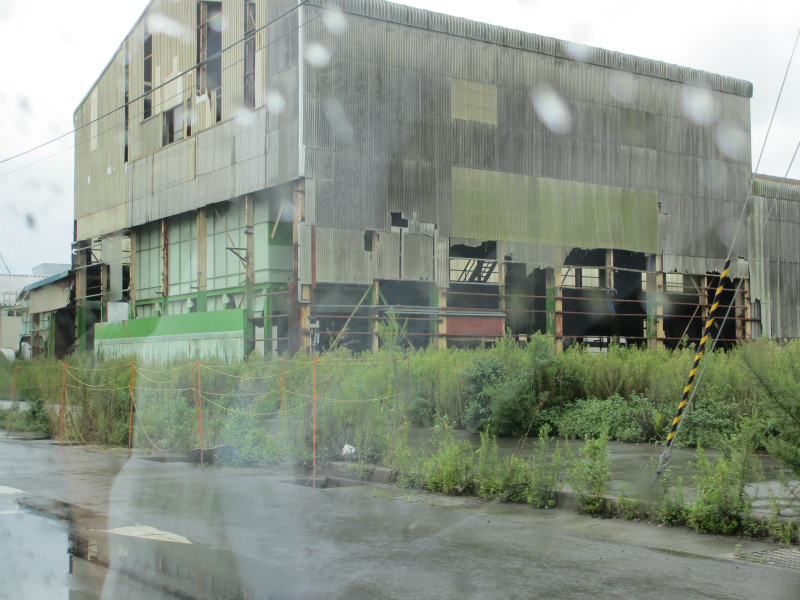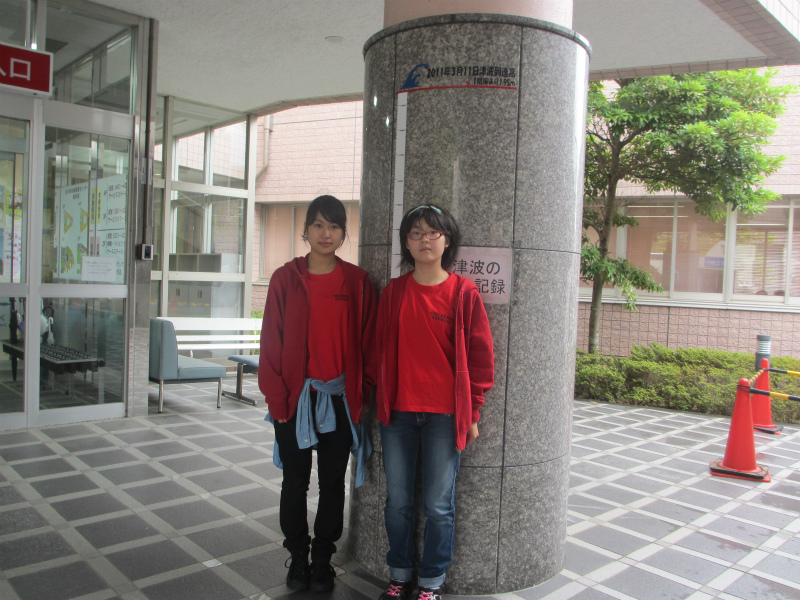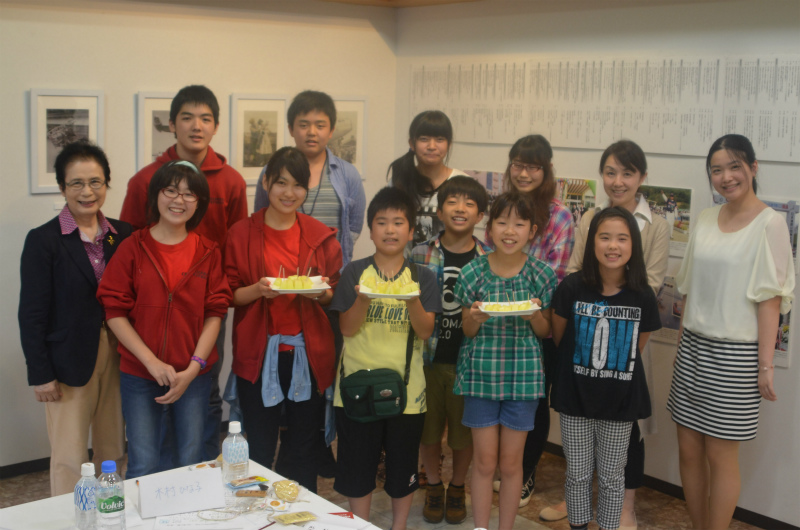by Mio Sakamoto (11)

It is almost three and half year since March 11, what a memorable day. At 9.0 on the Richter scale, maximum seismic intensity at 7, the earthquake hit in the east Japan. It named “The Great East Japan Earthquake.” This earthquake caused a huge tsunami and drowned towns at Sanriku coast. I went to those damaged areas, Ishinomaki and Onagawa on August 16th. The aim was to learn how the damaged areas look like from the children who live there. I conducted an interview for Children Reporters who work at The Kids Media Station at Ishinomaki.
First of all, I visited Hiyoriyama Park, Ishinomaki Port, Minato Elementary School and Onagawa Regional Medical Center (the old Onagawa town hospital.) Since Hiyoriyama Park is located at height, we could see a panoramic view of Ishinomaki city from there. There were landscape pictures taken before the earthquake posted in places. To compare with those pictures, it is clear that city landscape was dynamically changed. Buildings in the town disappeared sharply, resulting in almost vacant land in Minamihama Area and Kadonowaki Area. Sandbanks in Old Kitakami River got smaller than before because the tsunami flushed it out. A half destroyed building is still remained at Ishinomaki port. It was a pitiful sight.
Owing to the earthquake, Minato Second Elementary School (closed in 2013) unified to Minato Elementary School. On the site of Minato Second Elementary School, there were stone monuments commemorating closure of the school.

Although Onagawa Regional Medical Center was built at 18 meters height from the ground, the first floor of the building was flooded about 2 meters when the tsunami came. We saw many signs which indicate “tsunami attained at this point of height.” Also, small temporary housings still remain there. There were many things I couldn’t realize without going there.
After that, I visited children reporters in general incorporated association Kids Media Station to ask about the earthquake. Kids Media Station is an organization, publishes “Ishinomaki Hibi Kodomo Shinbun.”
When I asked how he felt when the earthquake happened, Ren Yaegashi (first year in Ishinomaki middle school) said “At that time, I was in fourth year in elementary school. So I was in school and I worried about my family members.”
Questioned about what he wants the town to be in the future, Hiroki Matsubayashi (first year in Hebita middle school) said “Since the tsunami hit our town, we could play only inside. I would like there to be more playgrounds” Also, according to Hinako Kimura (third year in Kadonowaki middle school), “After the earthquake, many stores in a shopping arcade were closed and became empty. So I hope stores would be opened again and become more bright.” Ren Yaegashi said “the stores are concentrated in the suburb area, I would like to make central area livelier.” Their opinions were mainly about town surroundings that have hugely changed from the tsunami.
When I was asking about whether the status quo of the city gradually approaches to their ideal, Yuuko Sakai (sixth grade in Kadonowaki elementary school) indicated that “It is approaching to the ideal. However, I don’t think the town became the ideal yet.” Ayaka Abe (sixth grade in Hebita elementary school) said “Minamihama area where Kadonowaki elementary school used to be there is now almost vacant area. The tsunami flushed almost everything out, there is grass only remained right now. That place is very dark because there are no lights, so I want to make that place brighter.” Hearing their answers, it seemed the area hasn’t recovered from the disaster or reached to the standard before.

What do they want people in other places to do is “I would be happy to if people in Japan will pay more attention to our town Ishinomaki and read “Ishinomaki Hibi Kodomo Shinbun.” On the one hand, there are reporter specified opinions there but on the other hand, there were opinions such “I hope many people will visit Ishinomaki and exchange with us.” (Kimura) or “I want the population of the visitors to increase than now. I would like them to know more about the earth quake.” (Abe). As stated above, there were many wishes for people to visit Ishinomaki.
Finally, I asked are there any lessons from the earthquake for people in Japan. Yaegashi said “People in Ishinomaki became more prepared for disasters than before. So, I would like people in other areas to be prepared for disasters.” Hinako Kimura also said “Since we can’t predict when earthquakes happen, I strongly recommend preparing for those unforeseen happenings.” Sakai indicated “It would be better to think about how to manage and survive from the earthquake on daily basis.” They told us their lessons from the earthquake.
As I visited in Ishinomaki, I felt an atmosphere which I couldn’t gain only watching documentaries or news through a screen. Also, I noticed there were many things I could never know as long as I could ask them who survived from the earthquake directly. If more people know about the earthquake by visiting the spot, it would be helpful for people to prepare for earthquakes whose epicenter is directly below Tokyo or Nankai Trough earthquake. To gain more knowledge about earthquakes will prevent people and cities from damaging.